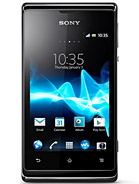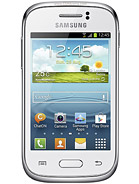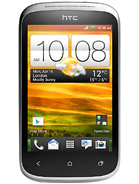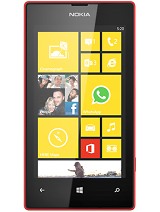Sony Xperia E review: E-lementary
E-lementary
Final words
Like its dual-SIM counterpart, the Sony Xperia E offers quite the feature set for such a conservative price point. It's currently available for under €130 in most markets - about €10 less than the E dual, and is the one of the very few smartphones from top-tier manufacturers that run Jelly Bean in this segment.
Despite the less than stellar hardware, the Xperia E provides performance that isn't too bothering with little lag and acceptable app loading times. The 1GHz CPU has really helped bring the user experience from slightly irritating to acceptable and that is about as good as thing get in this class.
The differences between Sony's Jelly Bean and ICS builds are not very significant when it comes to the Xperia E pair, at least in regards to visible changes in the UI. The Xperia E dual will most likely get the Jelly Bean update as well, so the only thing the single-SIM Xperia E really has left going for it is better battery performance in standby.
However, we believe these two phones are clearly targeting very different sets of users. Dual-SIM has its distinct uses and has been enjoying increased demand. Almost all leading smartphone manufacturers have pairs like the Xperia E to give their users greater choice.
That's why the Xperia E's most likely alternative is the Samsung Galaxy Young S6310. It has a slightly smaller screen of the same HVGA resolution, a 3MP camera and a 1GHz CPU. The Galaxy Young has launched on Jelly Bean and it too has a dual-SIM twin.
LG currently doesn't a direct Xperia E rival in its portfolio, with the Sony smartphone fitting right between the Optimus L3 II and Optimus L5 II. However, if you don't mind checking out the last season collection, the original Optimus L5 will match the Xperia E resolution, while offering a much bigger 4" screen and a more capable 5MP auto-focus camera. You will have to live with Android ICS, though.
HTC's foray into affordable droids comes in the form of the Desire C. The Desire C features a slower 600 MHz processor, and won't be getting an Android upgrade beyond its current ICS build, but is priced at just €120 in most markets, and offers a better camera and the arguably cooler looking Sense.
Having looked at the super affordable Androids, the cheapest WP8-powered competition seems to be making a seriously strong case. The Nokia Lumia 520, which we recently reviewed, easily beats the above selection by offering a dual-core CPU (of the Krait variety, no less) and 720p video, in addition to more than twice the screen resolution. The Lumia 520 costs about the same as the Xperia E, too, so unless the relatively limited app selection in the Windows Phone Store is a deal-breaker, it clearly offers more bang for your buck.
Bottom line, the Sony Xperia E is a reasonable package and if you do a lot of web browsing, the Jelly Bean's browser optimizations may be enough to convince you to fork out the cash. However, at this point it feels that the entry level market isn't the best place to be looking if you are into the Android platform.
The Google OS really starts show its full potential on the smartphones in the €150-€170 price range, but it just feels too constrained on the limited hardware on entry level smartphones such as the Xperia E. So we'd suggest either save a few more bucks, or consider the alternative in the face of WP8.
Reader comments
- limestone steve
- 01 Jun 2016
- Bw@
Cheap price so don't expect miracles Camera usable and limitations with storage You get what you pay for.
- AnonD-340973
- 12 Dec 2014
- mxv
Every time I log on facebbook it crashes and then restarts it self
- nE0n1nja
- 04 Oct 2014
- dMK
THis is a horrible phone! Why? It has 600 MB "Phone" memory, which is separate from the 2 GB internal memory. It fills up pretty damn fast and now I can't update any of my apps because I get "Insufficient storage space available" ...




